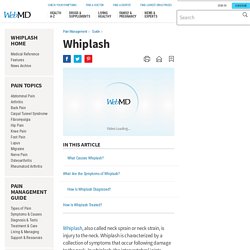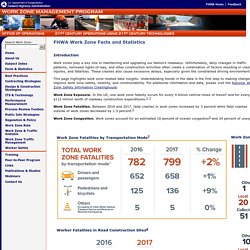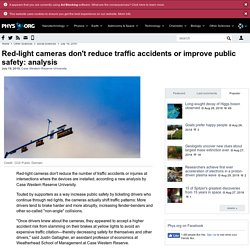

What You Should Know About Delayed Injuries and Car Accidents. What If My Accident Injuries Don't Show Up Right Away? Whiplash - Symptoms, Causes, Diagnosis, And Treatment. Whiplash, also called neck sprain or neck strain, is injury to the neck.

Whiplash is characterized by a collection of symptoms that occur following damage to the neck. In whiplash, the intervertebral joints (located between vertebrae), discs, and ligaments, cervical muscles, and nerve roots may become damaged. What Causes Whiplash? Whiplash is caused by an abrupt backward and/or forward jerking motion of the head, often as a result of a car accident.
What Are the Symptoms of Whiplash? Symptoms of whiplash may be delayed for 24 hours or more after the initial trauma. Neck pain and stiffness Headaches Pain in the shoulder or between the shoulder blades Low back pain Pain or numbness in the arm and/or hand Dizziness Difficulty concentrating or remembering Irritability, sleep disturbances, fatigue. 3 Biggest Teen-Driving Dangers During Summer’s 100 Deadliest Days. For many, the period between Memorial Day and Labor Day signals lazy pool days and barbecue-filled afternoons — but for others, the months when kids are out of school can bring grave danger.

Roadside-services provider AAA calls this period the “100 Deadliest Days,” and with good reason: The average number of deaths from crashes involving teen drivers was 17 percent higher per day compared with other days of the year. Related: Tips for Keeping Teen Drivers Safe The AAA Foundation for Traffic Safety found that over the past five years, nearly 3,500 people have been killed in crashes involving teen drivers during the 100 Deadliest Days, and nearly two-thirds of those injured or killed are people other than the teen behind the wheel. AAA analyzed fatality crash data from 2013 to 2017 to determine the biggest safety risks related to teen drivers and determined the major contributing factors. Here are the three biggest causes of teen-driving fatalities during the 100 Deadliest Days: 1. 2. 3.
Why Are There More Car Accidents in the Summer? When people think about dangerous times to drive, they typically think of things like blizzards, ice storms, and heavy downpours, not a warm, sunny summer day.

But in reality, rates of car accidents tend to actually increase during the summer months. According to data from the NHTSA, the numbers of fatalities caused by car crashes between the months of June and October in 2016 were higher than they were in months like January and February. Even though you don’t have ice and snow to deal with in the summer, there are still lots of other factors that can make driving more dangerous. Young Drivers One of the key reasons why car accident rates tend to go up in the summer is the fact that young drivers have more time to be out on the roads. Construction Site Car Accidents & Injuries: Who’s Responsible?
If there’s one sight Michigan drivers are all too familiar with, it’s the sight of construction barrels.

Road construction is never convenient, but it is a necessity. And now that winter is over, it’s time for road construction projects to become a lot more common — if your daily commute isn’t already being impacted by them. Construction zones aren’t just frustrating because they result in traffic slowdowns and detours, they can be pretty stressful to try and navigate safely. Between all the people who are out working on the road, the heavy equipment being used, lanes being closed, and the possibility that other drivers might not be as cautious as they should be, there are a lot of ways accidents can happen in construction zones. Construction Zone Auto Accidents. Causes of Construction Zone Accidents A reduction of lanes may lead to slower traffic or collision for those that do not notice the change or do not properly adapt to it.

Narrowing of lanes may cause scraping on the sides of vehicles when a driver is not paying attention to these external factors. FHWA Work Zone Facts and Statistics - FHWA Office of Operations. Introduction Work zones play a key role in maintaining and upgrading our Nation's roadways.

Unfortunately, daily changes in traffic patterns, narrowed rights-of-way, and other construction activities often create a combination of factors resulting in crashes, injuries, and fatalities. These crashes also cause excessive delays, especially given the constrained driving environment. This page highlights work zone-related data insights.
Understanding trends in the data is the first step to making changes to improve work zone safety, mobility, and constructability. Work Zone Exposure. Work Zone Fatalities. Red-light cameras don't reduce traffic accidents or improve public safety: analysis. Red-light cameras don't reduce the number of traffic accidents or injuries at intersections where the devices are installed, according a new analysis by Case Western Reserve University.

Touted by supporters as a way increase public safety by ticketing drivers who continue through red lights, the cameras actually shift traffic patterns: More drivers tend to brake harder and more abruptly, increasing fender-benders and other so-called "non-angle" collisions. "Once drivers knew about the cameras, they appeared to accept a higher accident risk from slamming on their brakes at yellow lights to avoid an expensive traffic citation—thereby decreasing safety for themselves and other drivers," said Justin Gallagher, an assistant professor of economics at Weatherhead School of Management at Case Western Reserve. "There is no reason to believe that there is a reduction in overall accidents thanks to red-light cameras," Gallagher said. While the U.S. More information: Justin Gallagher et al. Q&As. Can Red Light Traffic Cameras Improve Road Safety? Maybe you’ve spotted one at a busy intersection you have to drive through to get to work.

Maybe you’ve even fallen victim to its all-seeing eye, getting mailed a ticket for being a little cavalier with that last yellow light. However you look at it, one thing is clear: these days, increasing numbers of traffic cameras are being installed on red lights in cities all throughout the country. The intention behind them is simple: by providing more active oversight of intersections with traffic signals or stop signs, these safety cameras aim to entice drivers to drive more carefully and obey the traffic lights more closely by making the signals more enforceable.
After being programmed to track the cycle of the lights as they switch, these cameras respond to any driver who disobeys traffic signals by taking a photograph of their license plate and issuing a traffic citation via mail to the registered owner of this car. I-75 ranked among deadliest highways in U.S., report says - WCPO Cincinnati, OH. Why Are There So Many Big Car Crashes On I-94? In theory, car accidents can happen anywhere.

If vehicles can be driven on a given road, the potential for car accidents exists. Top 50 most dangerous intersections in Michigan. There is a new most dangerous intersection in Michigan.

New numbers from Michigan State Police show the most dangerous intersections last year, ranked by total crashes in 2016. The Canton Township intersection of Ford and Haggerty is no longer the most dangerous, although it still comes in at 4th. ALSO SEE: Top 10 most dangerous intersections in Metro Detroit Two intersections tied for most crashes in 2016: 12 Mile and Dequindre in Madison Heights and Ford Road and Lilly in Canton Township topped the list with 85 total crashes each. ALSO SEE: Tracking the worst potholes in Metro Detroit. Scenarios in Multiple Car Accident and Insurance Issues.
But what about if you were involved in a multi-vehicle car crash with tons of other irate if not, negligent drivers, what are the insurance issues you may likely face? What a Recent 29-Car Accident in Van Buren County Can Teach Us About Winter Driving. In a state like Michigan, winter driving isn’t always easy. Even if you make every effort to stay safe on the roads, from making sure your car is prepared to handle winter conditions to following best winter driving practices, there’s still a chance that you could still end up being involved in a car accident. It doesn’t take much snow or ice to make roads treacherous.
Unfortunately, car accidents are very common in the winter months and it’s not at all uncommon to hear reports about large multi-car accidents. A recent car accident in Van Buren County is just one example of this. Chain Reaction / Multi-Vehicle Accidents Overview. Multi-vehicle accidents commonly occur when more than two cars hit each other in a chain of rear-end accidents. Typically, they happen because of the force of the first collision: the last in a line of cars (Driver D) rear-ends the second to last car (Driver C), pushing Driver C forward into the third to last car (Driver B), causing Driver B to rear-end the first car (Driver A). Largest Traffic Accident Pile-Ups In History - WorldAtlas.com. Road accidents are scary, and while reckless driving or over-speeding could be noted as major reasons for many such road accidents or crashes, nature also at times plays a major part.
Road accidents due to foggy conditions, heavy rains, or even snowfall have not been uncommon. Occuring not just in hilly terrains or winding roads, but even in flat plains on straight thoroughfares, vehicles that ply on with high speed on expressways on wintry mornings might skid off and collide with other vehicles. Such events can thereby lead to massive pile ups involve multiple parties. The loss of lives, vehicles getting damaged, and even greater concerns for general road safety are just some of the topics that might come into the minds of anyone discussing such scenarios. Let us now look at the most massive pile ups that have ever been recorded to have happened, whether due to poor weather conditions and visibility on highways and expressways around the world or otherwise. Tesla is already showing how the insurance industry will be disrupted by self-driving cars.
Driverless Car Accidents: Who’ll Be To Blame? Ever since cars first started hitting the road over a century ago, automotive technology and design has been in a constant state of change. Over time, cars have become more efficient, easier to operate, and most importantly, safer. Even one of the most basic car safety features we have, seat belts, didn’t start becoming a standard feature until the 1950s. As time and technology progressed, automated technology started making its way into cars, from cruise control to anti-lock braking systems. Nowadays, drivers can buy cars equipped with increasingly sophisticated features intended to help prevent car accidents, like lane departure warnings, backup cameras, blind spot warnings, and automated braking that takes over if the driver doesn’t act quickly enough.
Who is liable if a self-driving car crashes? Tesla mishap raises issues. Should Carmakers Be Liable When A Self-Driving Car Crashes?